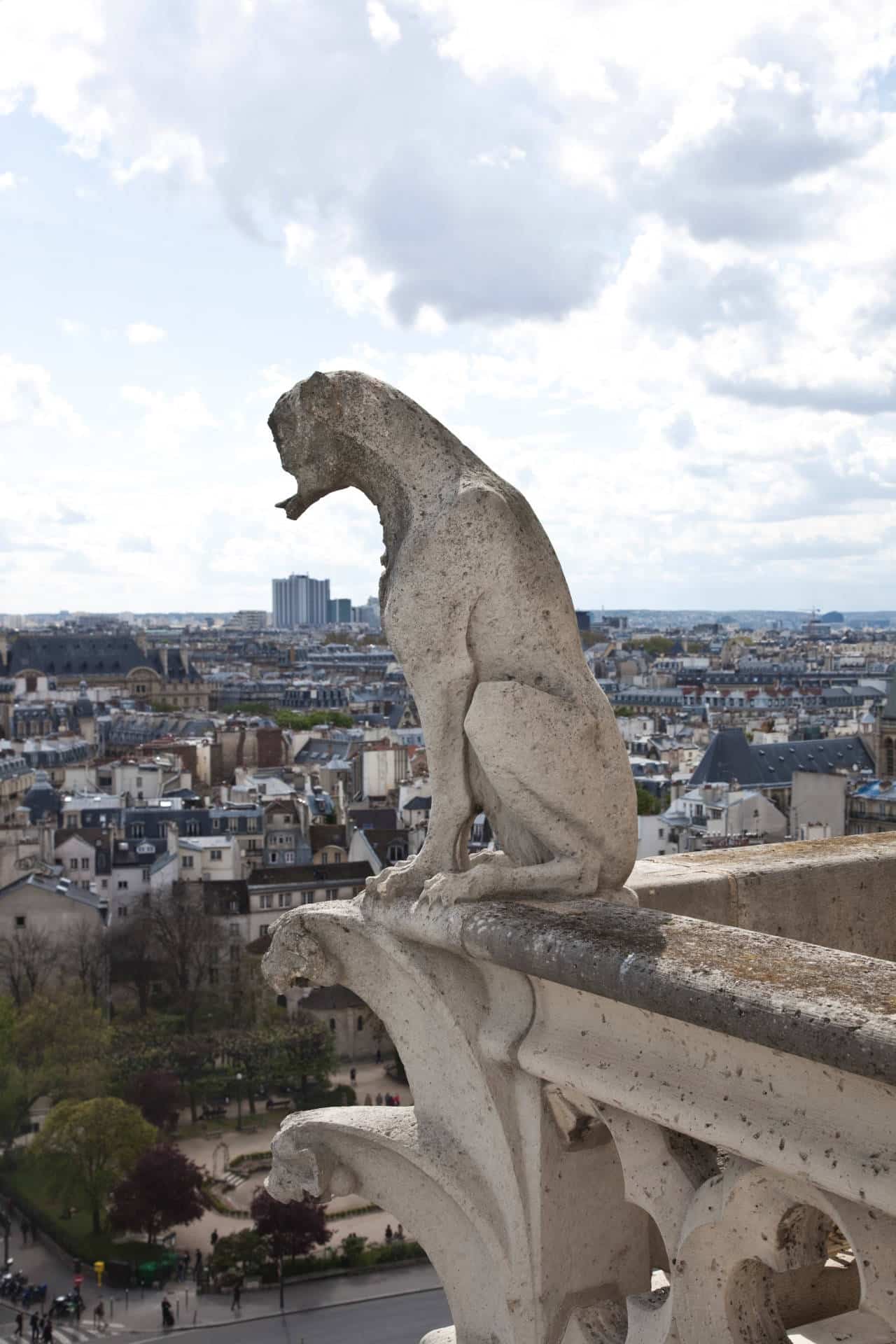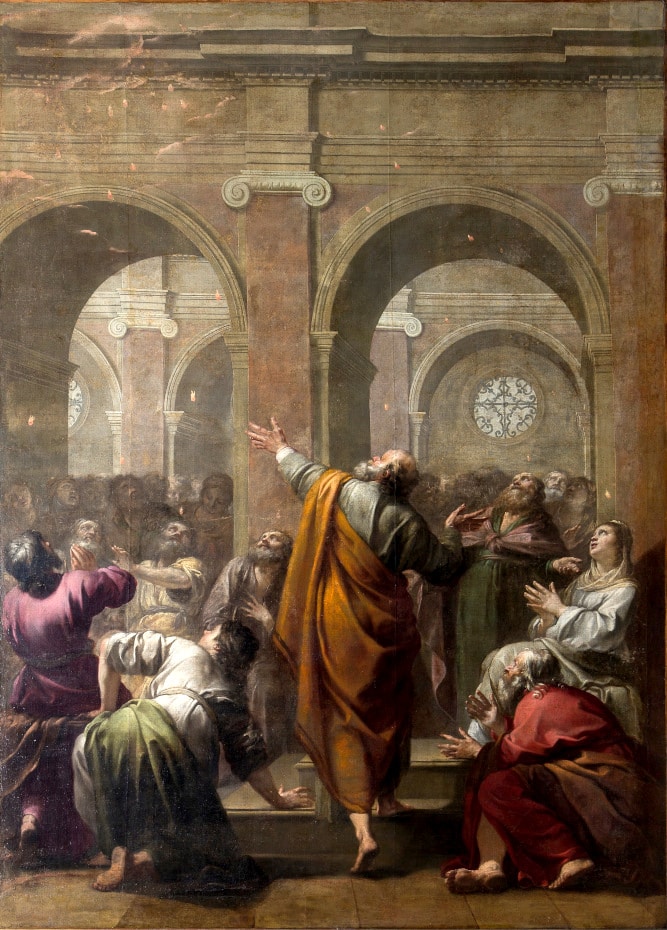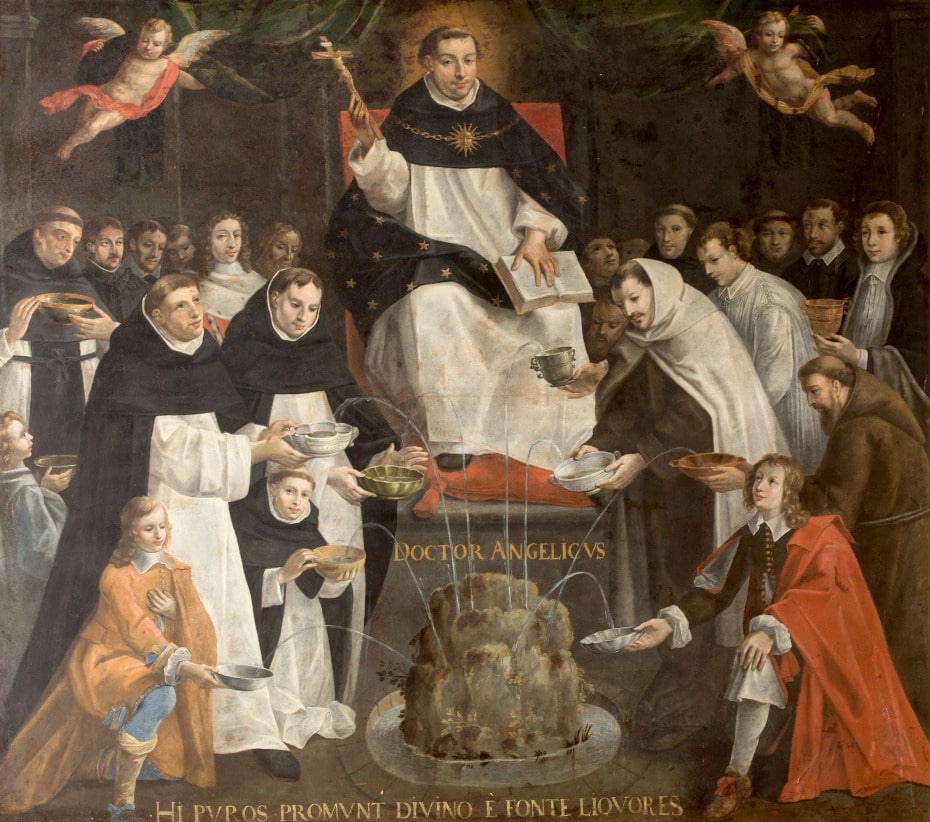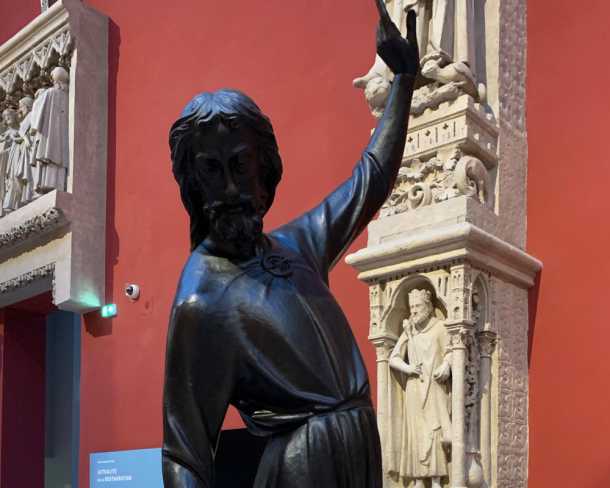Grotesques, often confused with gargoyles, are an essential architectural element of Notre-Dame Cathedral, adding a sense of mystery and fantasy to its façade. Unlike gargoyles, which serve a functional purpose by channeling rainwater away from the building, grotesques are purely decorative sculptures that adorn the cathedral's exterior. These stone figures, shaped in the form of mythical beasts, human-animal hybrids, and demonic creatures, have captivated the imagination of visitors for centuries.
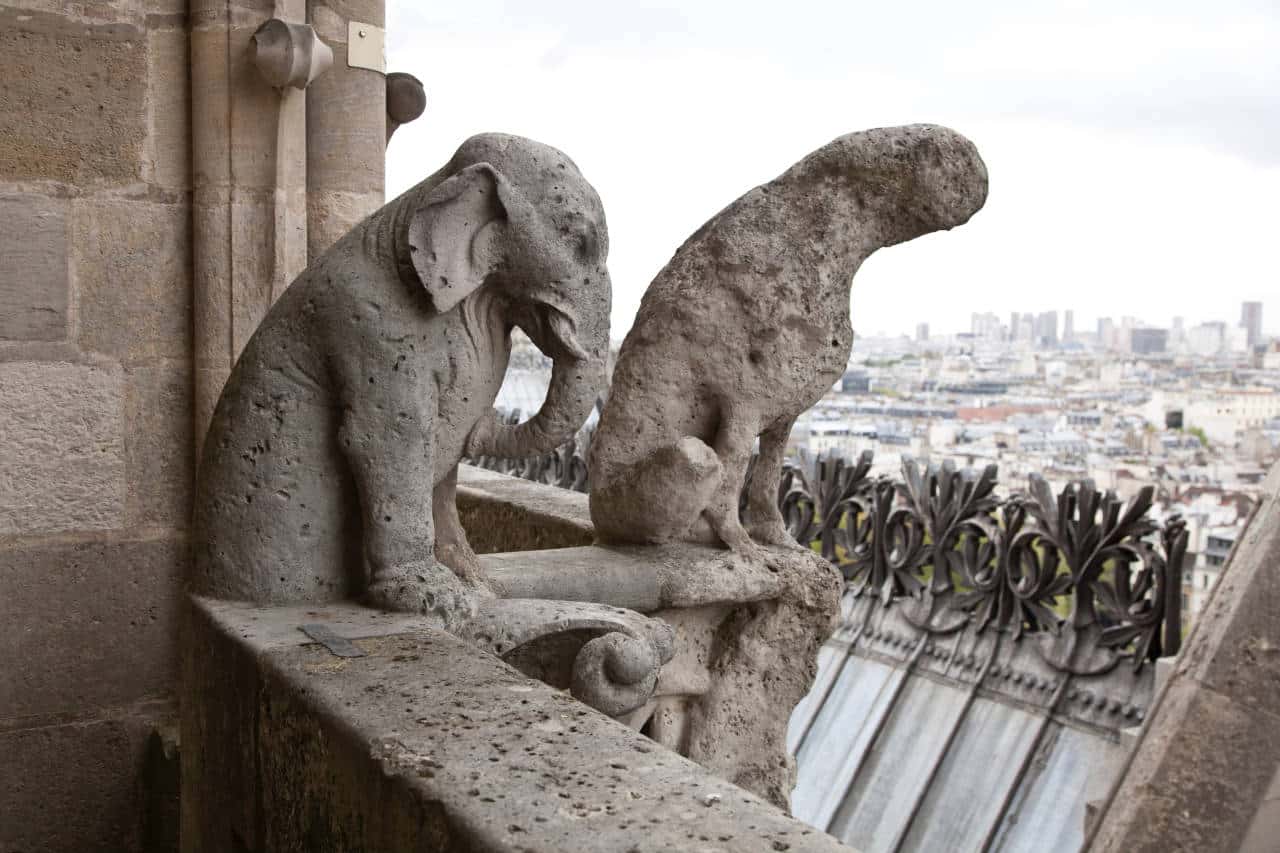
The grotesques, the stone statues which adorn the upper gallery between Notre-Dame's two towers, were designed by Eugène Viollet-le-Duc in the 19th century. They recreate the fantastic universe of the Middle Ages.
Sculpted by the workshops of the artist Geoffroy-Dechaume, there are 54 grotesques. The shapes of some of them are familiar to us: the pelican (symbol of charity), the bear (symbol of strength), the dragon (symbol of power) or Cerberus, the three-headed dog who guards the entrance to the Underworld.
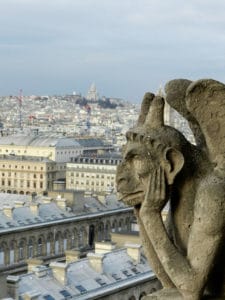
The use of grotesques in Gothic architecture was not limited to aesthetics; they also served a symbolic and didactic purpose. In the Middle Ages, the grotesques were thought to ward off evil spirits, protect the sacred space within the cathedral, and serve as a reminder of the ever-present struggle between good and evil. Additionally, they represented the chaotic and unruly aspects of human nature, a stark contrast to the serenity and order found within the cathedral.
Another interesting fact about the grotesques of Notre-Dame is their association with the literary world. Victor Hugo's novel "The Hunchback of Notre-Dame" played a significant role in renewing public interest in the cathedral's architecture during the 19th century. In the novel, the protagonist Quasimodo, a bell-ringer, often finds solace among the grotesques and gargoyles of the cathedral, considering them his only friends.
The presence of grotesques on Notre-Dame's façade reflects not only the artistic creativity of the sculptors who crafted them but also the rich symbolism and cultural heritage of the cathedral itself. As restoration work continues to bring the cathedral back to its former glory, these enigmatic figures will remain a source of fascination and wonder for generations to come.
Status of the Grotesques
Four grotesques of this group need to be entirely replaced because they are damaged beyond repair. The remaining 50 are in need of restoration to repair damage sustained over time from weather, pollution and degradation of the stone.
